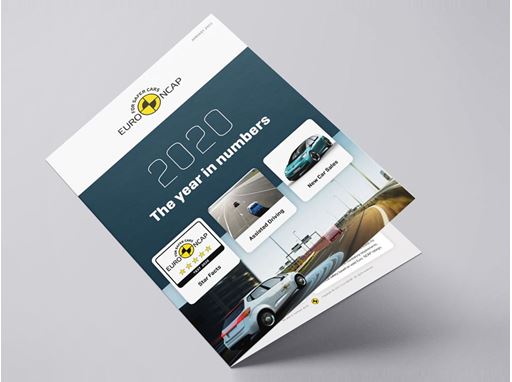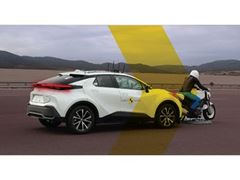-
27-JAN-2021
Euro NCAP’s 2020: Challenges and Progress

27 January 2021 - A look back at how Euro NCAP covered a year that began with the outbreak of a pandemic, followed by lockdowns and social distancing rules. Euro NCAP testing was put on hold for a few months but was able to resume in the middle of the year thanks to Euro NCAP’s labs and employees who quickly adapted to Covid-proof working practices.
The spread of the coronavirus led to a significant drop in new passenger car sales and the cancellation or postponement of several announced vehicle models. This big downturn coincided with the adoption of new tests by Euro NCAP to address longstanding needs in occupant protection, improve post-crash protection and promote the latest advanced driver assistance technology. A key change was the adoption of a new moving barrier to moving car frontal crash test to evaluate partner as well as occupant protection. Side impact protection requirements were strengthened by increasing the barrier mass and its test speed and by the introduction of a new far-side impact protection test, focussing on driver protection and the potential interaction between driver and front seat passenger. New, challenging test scenarios were added to rate technology designed to avoid collisions with other vehicles and with vulnerable road users, including turning at a crossing. In addition, the first steps were taken to reward Driver Status Monitoring systems, which detect driver fatigue and distraction. Finally, new rating rules were implemented to promote better post-crash safety, along with the release of the Euro Rescue application for first responders.
The overhaul of the rating scheme, with significant test changes introduced in several areas simultaneously, posed a considerable challenge to the industry. Nevertheless, the latest models scored very well against the 2020 criteria. In total only 11 new car models were tested last year, a stark drop from the 55 cars tested in 2019. Nine cars rated 5 stars (82%), one car achieved 4 stars (9%) and one got 3 stars (9%). There were no cars lower than 3 stars. These positive results were in part achieved thanks to the early adoption of pioneering safety technology, such as center airbags for far-side protection, attention assist technology and advanced AEB functions preventing car, pedestrian, and cyclist crashes.
Besides the publication of safety ratings, Euro NCAP launched a unique grading system to help the safe adoption of assisted driving technologies by consumers and examined the state-of-art of driver assistance systems available on commercial vans to support the purchasing decision process of fleet operators and small business owners. These initiatives illustrate the expansion of Euro NCAP’s scope and its increasing influence on future advances of industry and the regulatory framework by continuously driving improvements in vehicle safety.
To find out more about the 2020 Year in Numbers, take a look at the following link:
Editor’s note
For full results, visit www.euroncap.com or Euro NCAP's newsroom for journalists.
For media information, please contact us at media@euroncap.com.
Follow us online and on social media:
Twitter
Facebook
Instagram
YouTube
About Euro NCAP
Euro NCAP organizes crash tests on new vehicles and provides motoring consumers with a realistic and independent assessment of the safety performance of some of the most popular cars sold in Europe. Established in 1997 and backed by several European Governments, motoring, consumer and insurance organizations, Euro NCAP has rapidly become a catalyst for encouraging significant safety improvements to new car design. Visit our website: www.euroncap.com.
Euro NCAP ratings strictly apply to vehicles of the specifications offered in Europe. The ratings do not necessarily apply to models offered in other regions, even when sold under an identical name, as production specification and equipment may vary.









